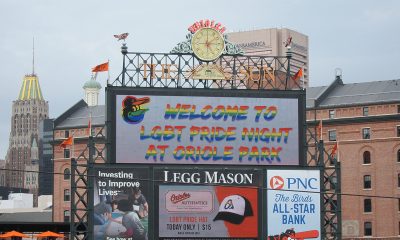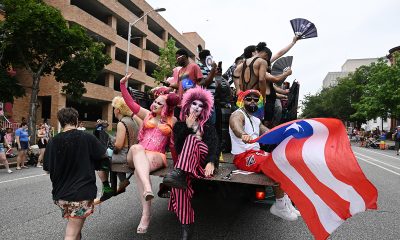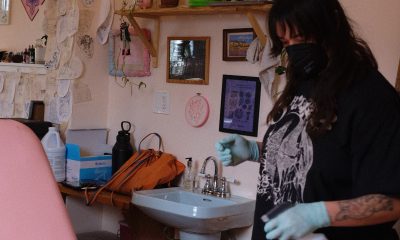Arts & Entertainment
Baltimore’s state-of-the-art arena highlights spring arts scene
Lizzo, Janet, Bruce, Joan Jett and more to christen renovated space
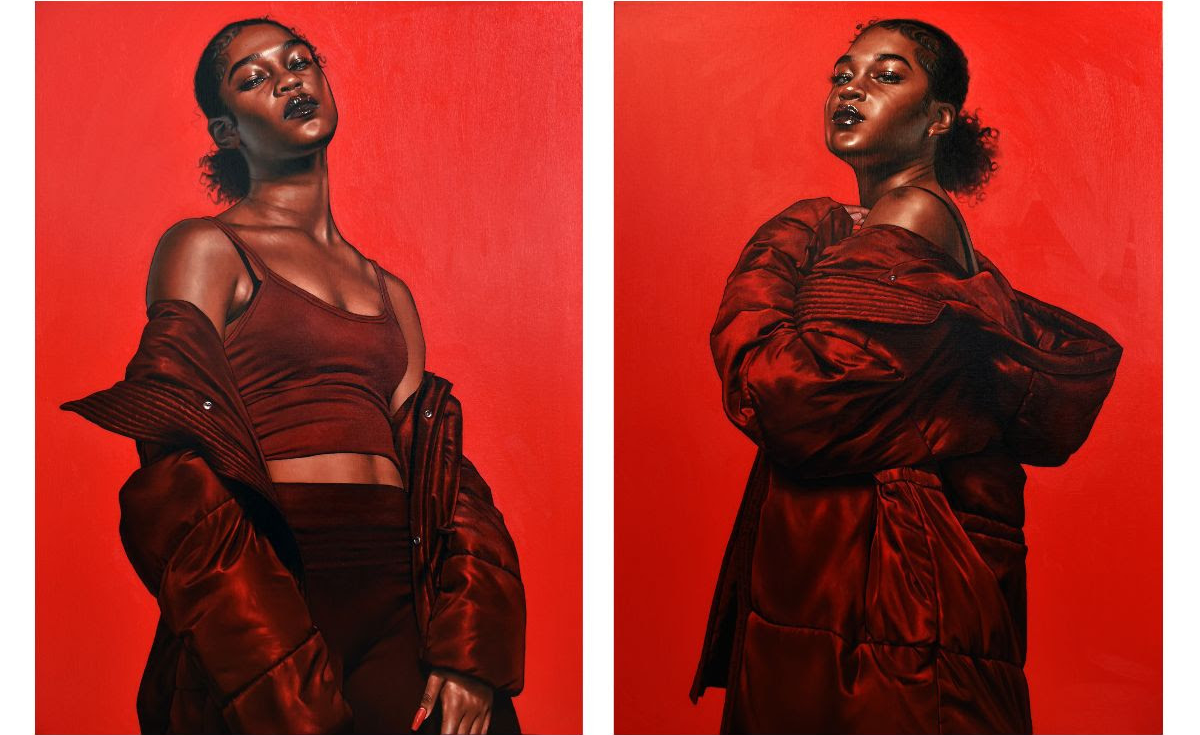
For years, Baltimore missed out on performances by big-name musicians, comedians and others because it didn’t have a 14,000-seat arena capable of attracting them, but not anymore.
Starting in April, more than a dozen acts will be coming to town when the CFG Bank Arena at 201 West Baltimore St. — formerly known as the Royal Farms Arena — reopens following a $200-$250 million renovation designed to turn it into a state-of-the-art sports and entertainment venue.
The arena’s reopening after more than a year of construction is one of the highlights of the spring arts season in Baltimore, along with new exhibits at the Baltimore Museum of Art; new shows at the Hippodrome and Lyric; a new book festival, a John Waters book signing and other events around town.
On April 7, Bruce Springsteen and The E Street Band will be the first performers to appear at the CFG Bank Arena, a concert that’s being billed as opening night for the refurbished and rebranded hall.
The Boss will be followed by: Eagles Hotel California Tour, April 8; Straight Jokes No Chaser, April 14; Jeff Dunham Still Not Canceled, April 15; Adam Sandler, April 21; New Edition: Legacy Tour with Keith Sweat, Guy and Special Guest Tank, April 22; Monster Jam, April 28 to 30; AEW Dynamite, May 3; Lizzo, May 9; Janet Jackson: Together Again with Special Guest Ludacris, May 13; Anita Baker: The Songstress with the Legendary Babyface, May 14; blink-182 Tour 2023, May 26; Stars on Ice, June 2; Bryan Adams: So Happy It Hurts 2023 with Joan Jett and The Blackhearts, June 6, and Dude Perfect PandaMonium, June 25.
Performances scheduled for later in 2023: Chris Stapleton’s All-American Road Show; Thomas Rhett, Lionel Richie and Earth, Wind & Fire, and Kiss – the End of the Road Tour. The CFG Bank Arena website is cfgbankarena.com.
Owned by the City of Baltimore, the arena opened in 1962 as the Baltimore Civic Center and later was renamed the 1st Mariner Arena (2003 to 2013) and the Royal Farms Arena (2014 to 2022). It was one of the first places The Beatles appeared during their augural trip to America in 1964, and Martin Luther King Jr. spoke there in 1966. The Baltimore Bullets and Baltimore Clippers played there for many years.
As the arena grew older, city officials contemplated constructing a replacement elsewhere but couldn’t decide on a location. They eventually opted to keep the existing venue and bring in a new management team to upgrade it to be competitive with other East Coast arenas. The decision was part of a larger effort to revitalize the west side of downtown Baltimore, where a new building for the city’s historic Lexington Market recently opened several blocks away.
The CFG Bank Arena team is led by the Oak View Group of Los Angeles, in association with Thirty Five Ventures, the investment company of NBA player Kevin Durant and his business partner, Rich Kleiman, and recording artist Pharrell Williams. The Oak View Group team funded the improvements in return for rights to manage and lease the facility, and it’s offering seat leases as part of the ticketing options.
Renovation work began in early 2022 and included a revamped seating configuration; new concourses, restrooms, and concessions areas; updated mechanical systems and a redesigned exterior. The refurbished arena had a test run last month, when Baltimore hosted the Central Intercollegiate Athletic Association’s Men’s and Women’s Basketball Tournaments, but there was still more work to finish. Starting in April, managers say, all the renovations will be complete and it will be ready for the entertainers.
Visual arts events
Baltimore Museum of Art, 10 Art Museum Drive (artbma.org): From April 5 to July 16, the BMA will present “The Culture: Hip Hop and Contemporary Art in the 21st Century.” Coinciding with the 50th anniversary of the emergence of hip hop in the 1970s, the exhibit will examine the global phenomenon of hip hop and its impact on music, fashion, technology and the visual and performing arts.
More than 90 works of art and fashion, including many by LGBTQ artists, will show the many ways hip hop has influenced contemporary society. According to the BMA, queer artists with work in the exhibit include: Lauren Halsey; Rashaad Newsome; Mark Bradford; Julie Mehretu; Dapper Dan; Telfar Clemens; Tschabalala Self; Amani Lewis; John Edmonds; Nina Chanel Abney; Jonathan Lyndon Chase; Caitlin Cherry; Devan Shimoyama; Texas Isaiah; Shabez Jamal; Eric N. Mack and Rozeal. Non-cisgender artists include Isaiah, Chase, Lewis and Jamal.
The exhibit is co-organized by the BMA and the Saint Louis Art Museum. One of the curators is Asma Naeem, the BMA’s new Dorothy Wagner Wallis Director. Other curators include Gamynne Guillotte, the BMA’s chief education officer, and Hannah Klemm and Andrea Purnell, from the Saint Louis museum.
Also opening at the BMA this spring: “Histories Collide: Jackie Milad x Fred Wilson x Nekisha Durrett,” April 26, 2023 to March 17, 2024: New works by Milad and Durrent in dialogue with Wilson’s Artemis/Bast (1992); “Martha Jackson Jarvis: What the Trees Have Seen,” May 7 to October 1, 2023, featuring mixed media works by Jarvis that imaginatively trace a free Black militiaman’s journey from Virginia to South Carolina in the American Revolution; “Recasting Colonialism: Michelle Erickson Ceramics,” May 7 to October 1, 2023; “The Matter of Bark Cloth,” May 7 to October 1, 2023, and “Wild Forms: Fauve Woodcuts,” May 14 to October 15, 2023.
American Visionary Art Museum, 800 Key Highway: The main exhibit is “ABUNDANCE: Too Much, Too Little, Just Right” (Championing good, honest work from the hand and the heart), curated by Gage Branda. Also: AVAM’s Logan Visionary Conference 2023, March 19, 2 p.m. to 4 p.m.; Kinetic Sculpture Race, May 6.
Walters Art Museum: 600 North Charles St. (thewalters.org): “Quiet Beauty: The Watercolors of Leon Bonvin,” opened in February; “Arts of the Medieval Mediterranean,” is ongoing, and “Across Asia: Arts of Asia and the Islamic World,” a new installation of the museum’s Asian and Islamic collections, opens April 23.
The Peale, 225 Holliday St. (thepeale.org): “Compensation for Loss” exhibition, March 19 to April 30, and Submersive Productions Performances: Katalepsis, March 24 to April 30.
Maryland Center for History and Culture, 610 Park Avenue (mdhistory.org): “Claire/McCardell,” an exhibit about Claire McCardell, an influential designer of women’s clothing from the 1930s to the 1950s and beyond; “Discover Maryland;” “The Unfinished Revolution: Maryland in the Wars for Independence,” and “Passion and Purpose: Voices of Maryland’s Civil Rights Activists.”
Baltimore Museum of Industry, 1415 Key Highway (thebmi.org): “Fire & Shadow: The Rise and Fall of Bethlehem Steel,” documenting the 125-history of the Sparrows Point steel mill.
B&O Railroad Museum, 901 West Pratt Street (borail.org): New permanent exhibit: “Freedom Seekers on the B&O Railroad.”
Waverly Book Festival (waverlymainstreet.org): A new book festival organized to replace the Baltimore Book Festival, 32nd and Barclay streets and other locations, April 28 to 30.
John Waters at Atomic Books, 3620 Falls Road (atomicbooks.com): As part of a book tour for the release of the paperback version of his novel, “Liarmouth: A Feel Bad Romance,” writer and filmmaker John Waters will sign books on May 12 starting at 7 p.m.
Performing arts events
Hippodrome Theatre, 12 South Eutaw St., (Baltimore.broadway.com): Spring shows include: To Kill A Mockingbird, March 14 to 19; Respect – Aretha Franklin Tribute, March 23; Aziza, March 25; Lewis Black, April 2; Hadestown, April 12 to 22; Rock From The Heart, April 22; Shen Yun Performing Arts, April 28-30; Dino Ranch Live, May 6; Six the Musical, May 9 to 14, and Frozen, June 7 to 18.
The Lyric Baltimore, 140 West Mount Royal Ave., (lyric.baltimore.com): Royal Comedy 2023: Sommore, Bruce Bruce, Lavell Crawford and Special K, March 18; Hits! The Musical, March 19; Killer Queen, March 25; Bored Teacher Comedy Hour, March 31; Good Friday: Carl Thomas, Lyfe Jennings and Christopher Williams, April 7; Brit Floyd, April 15; Soul Marathon: Bloodstone, April 22; Yes Epics & Classics featuring Jon Anderson and The Band Geeks, May 6; Fortune Feimster, May 19; Boz Scaggs, May 20; Puscifer, June 1; John Mellencamp, June 2; Kansas – The Band, June 3; Luis Angel, June 4; Bad Friends Podcast: Andrew Santino and Bobby Lee, June 16; Stephen Sharer, June 17, and Les Claypool’s Fearless Flying Frog Brigade and W.I.T.C.H.
Creative Alliance, 3134 Eastern Ave. (creativealliance.org): The High & Wides with Hannah Lee Thompson, March 31; 2023 Marquee Ball, April 22; Alison Crockett Presents Echoes of an Era: The Jazz Sides of Chaka Kahn, April 28, Ngaiire, May 5; Brandee Younger, June 22, and Madison McFerrin, June 23.
Baltimore Center Stage, 700 North Calvert St., (centerstage.org): Tiny Beautiful Things, March 9 to April 2.
Everyman Theatre, 315 West Fayette St. (everymantheatre.org): The Sound Inside, March 7 to April 2; Harvey, April 25 to May 21, and The World Goes Round, June 6 to July 2.
Arena Players, 801 McCulloh Street (arenaplayersinc.com): Open Admissions and When Men Reduce as Women Do, March 17, 18, 19, 24, 25, 26, 31 and April 1 and 3; Sizwe Banzi is Dead, April 21, 22, 23, 28, 29, 30, May 5, 6, and 7, and Nina, May 26, 27, 28, June 2, 3, 4, 9, 10, 11, 16, 17 and 18.
Live! Casino Hotel Maryland, 7002 Arundel Mills Circle, Hanover, Md., (maryland.livecasinohotel.com): Patti LaBelle, March 10; Air Supply, March 11; Hoops Fest Watch Parties, March 14; Lovers in the Night Spring Concert, March 19; Mixed Martial Arts: Shogun Fights, March 25; Jerry Seinfeld, May 19, and Kevin Hart, June 11.
Baltimore Soundstage, 124 Market Place, presents the Hell in the Harbor Festival over the Memorial Day weekend, May 27 and 28. Its complete spring lineup for March to June, with dozens of acts, is on its website, Baltimoresoundstage.com.
Photos
PHOTOS: Independence Day Weekend in Rehoboth
Wicked Green Pool Party, fireworks among festivities
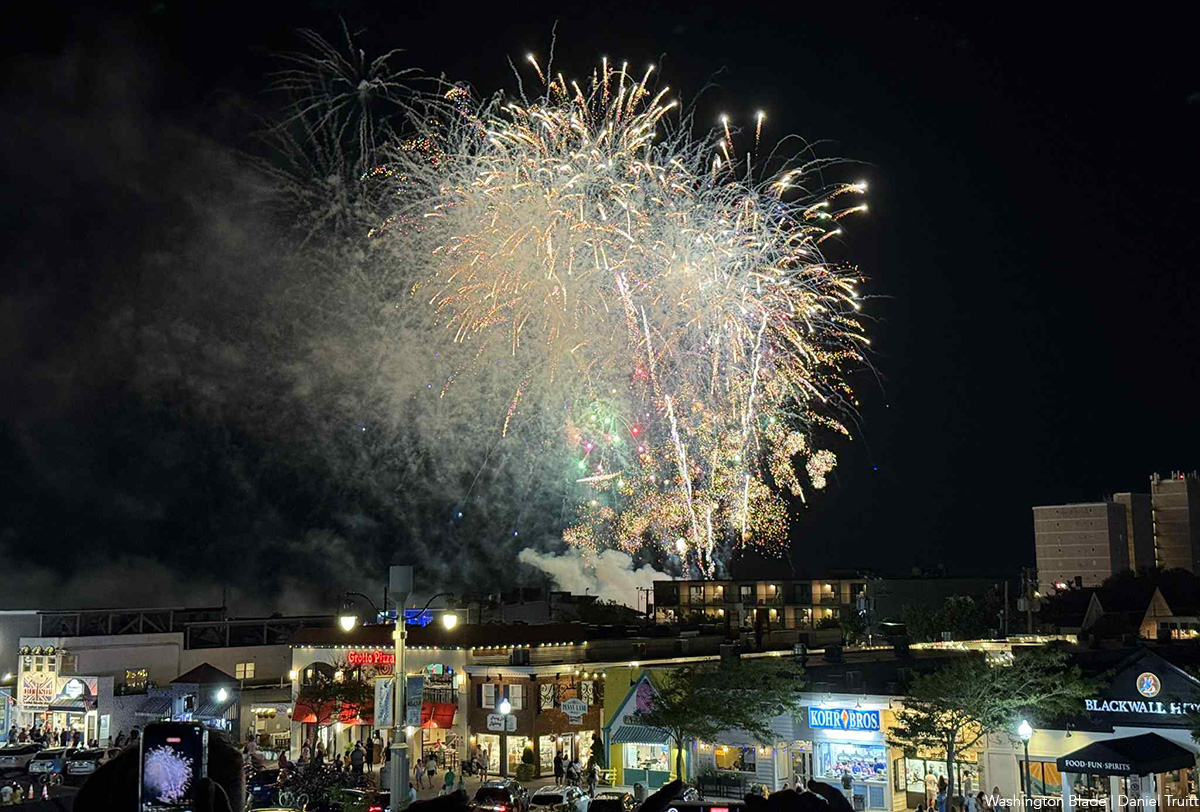
Vacationers and residents alike enjoyed Independence Day Weekend activities in Rehoboth Beach, Del. The Wicked Green Pool Party drew hundreds to the CAMP Rehoboth fundraiser on Saturday. That evening, revelers went to the rooftops to watch the fireworks display.
(Washington Blade photos by Daniel Truitt)
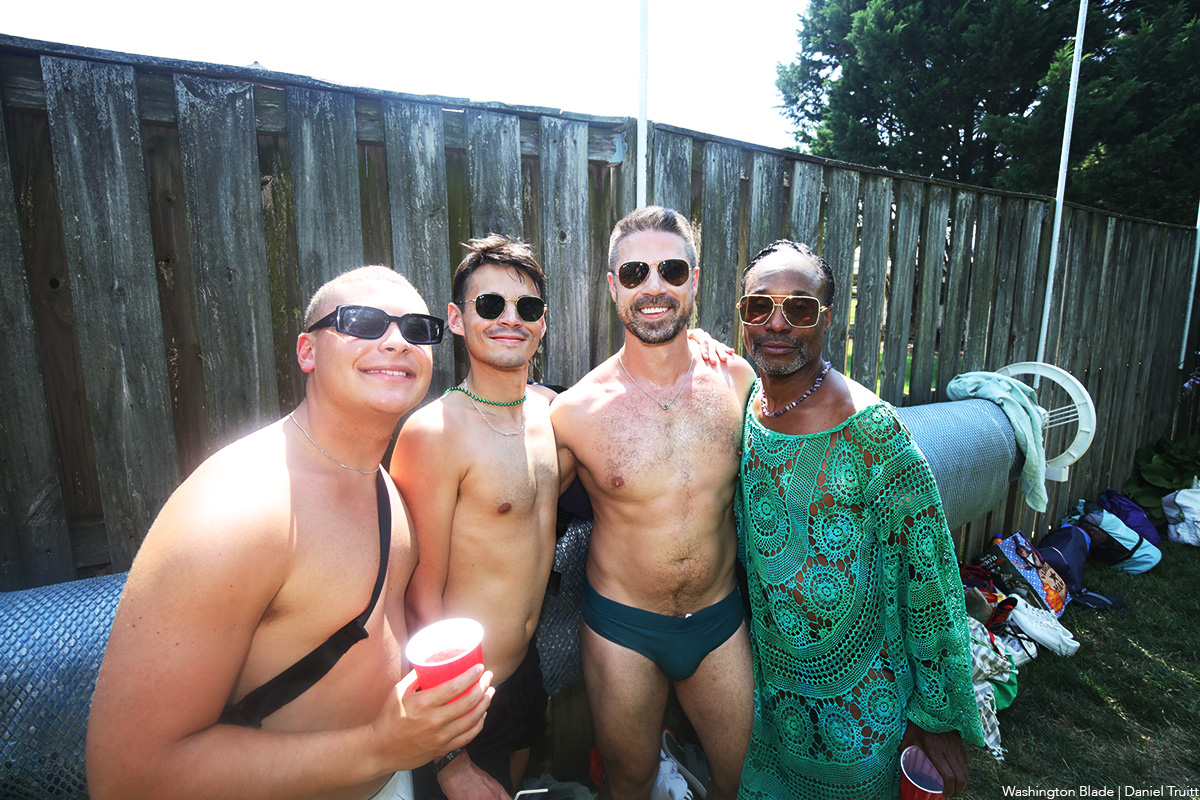

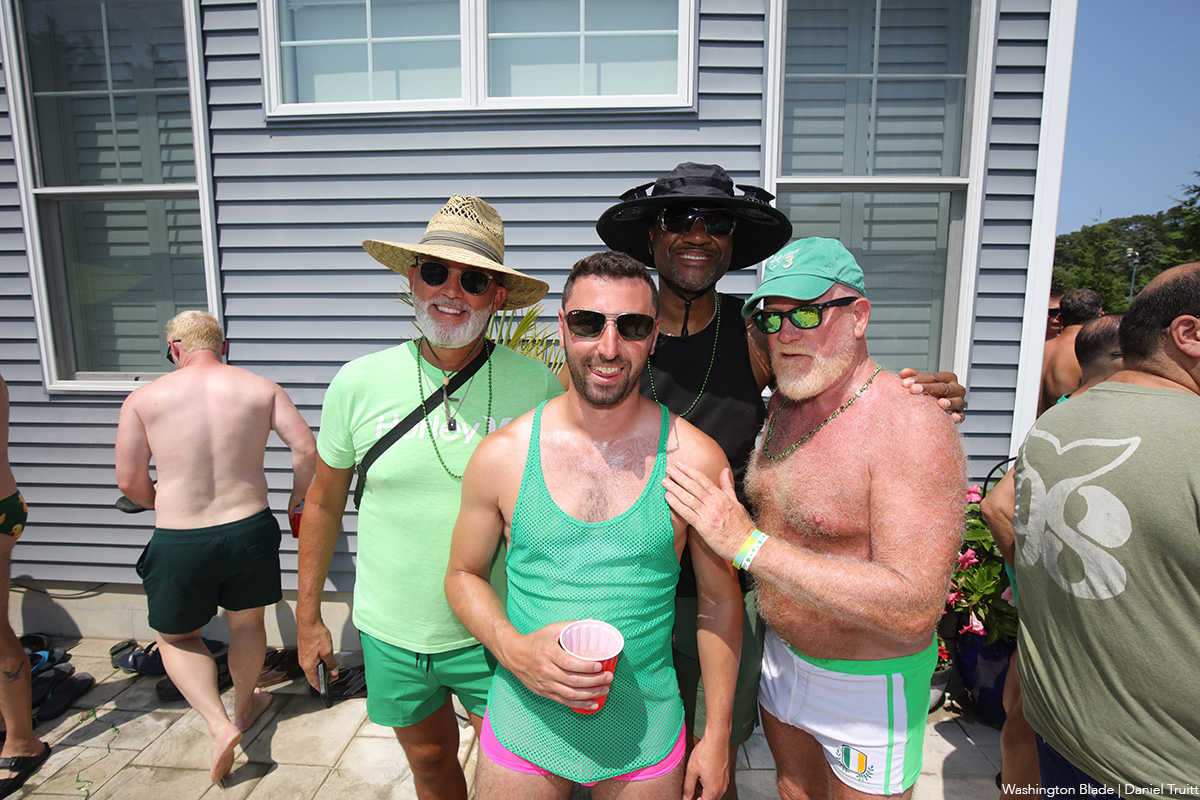
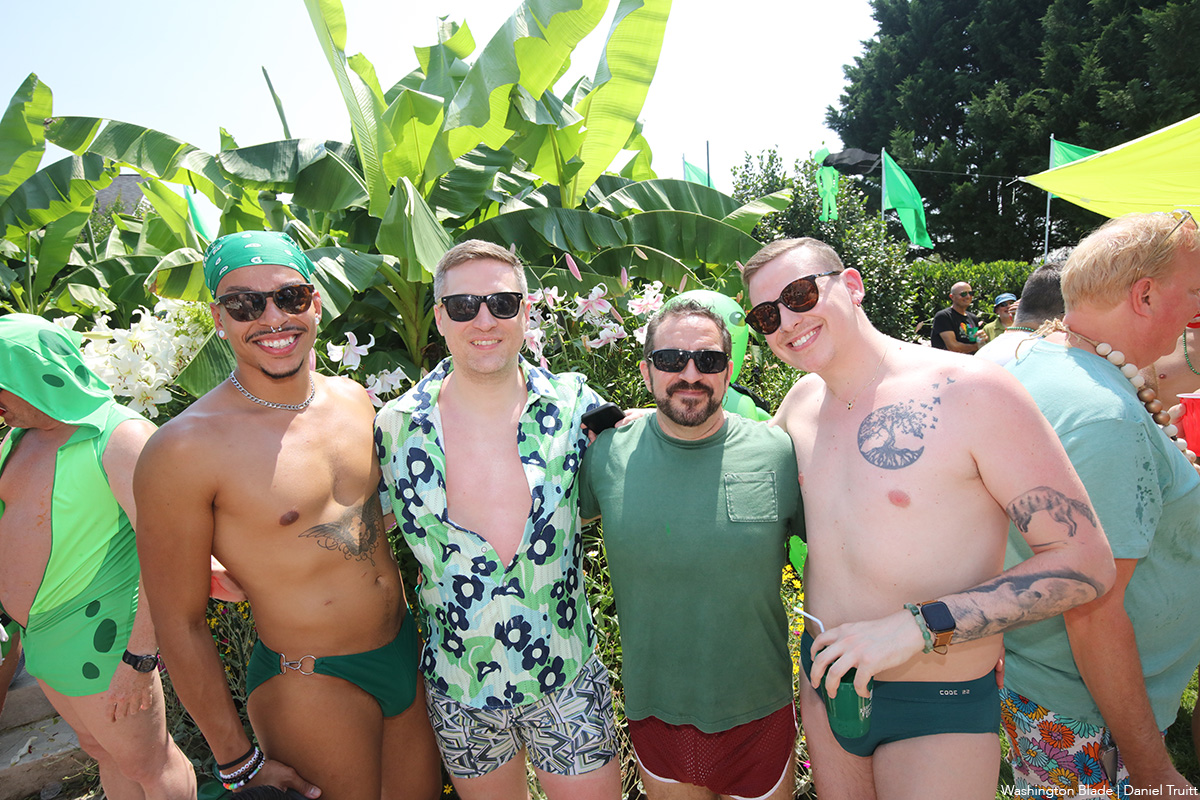
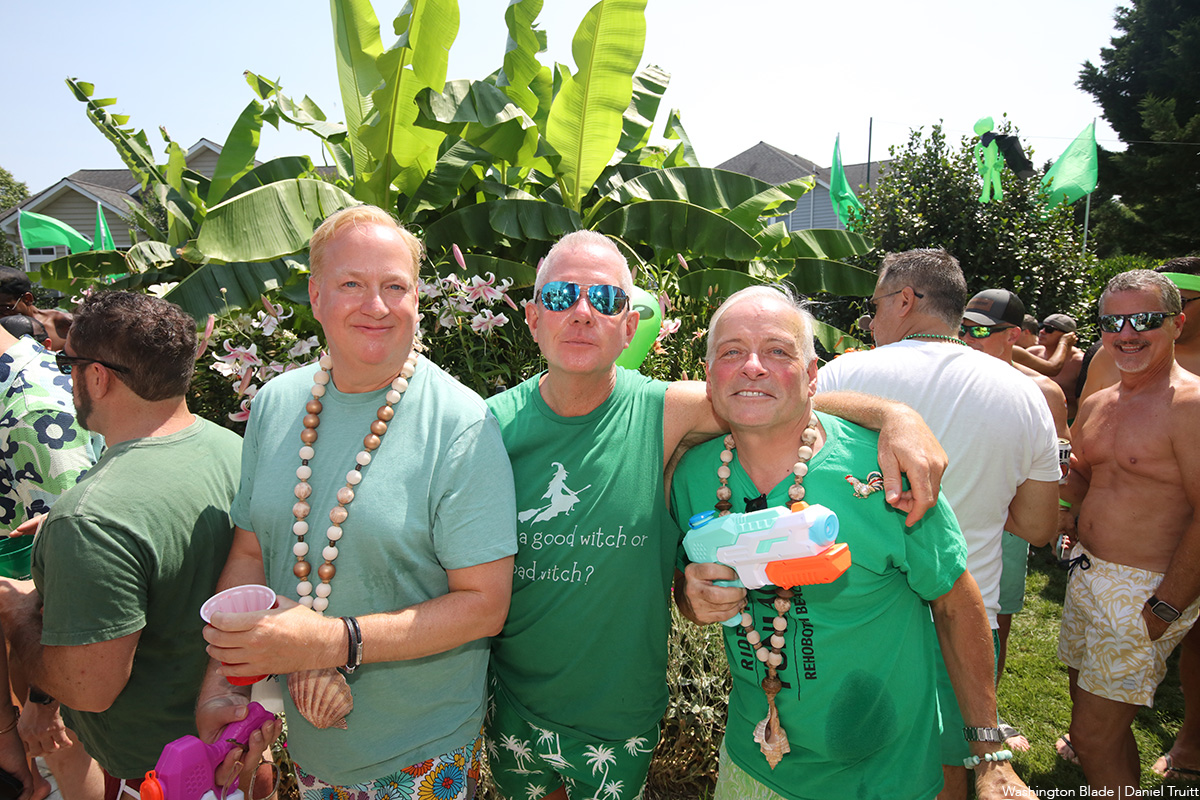
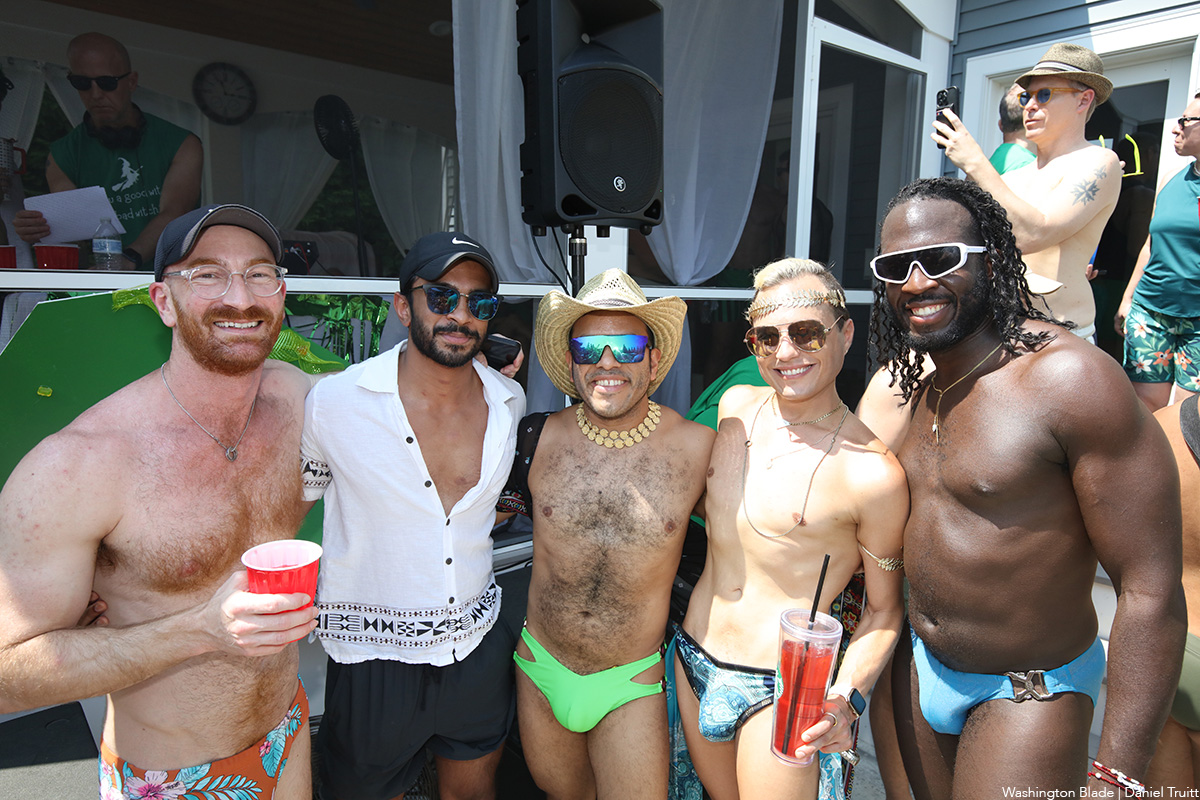
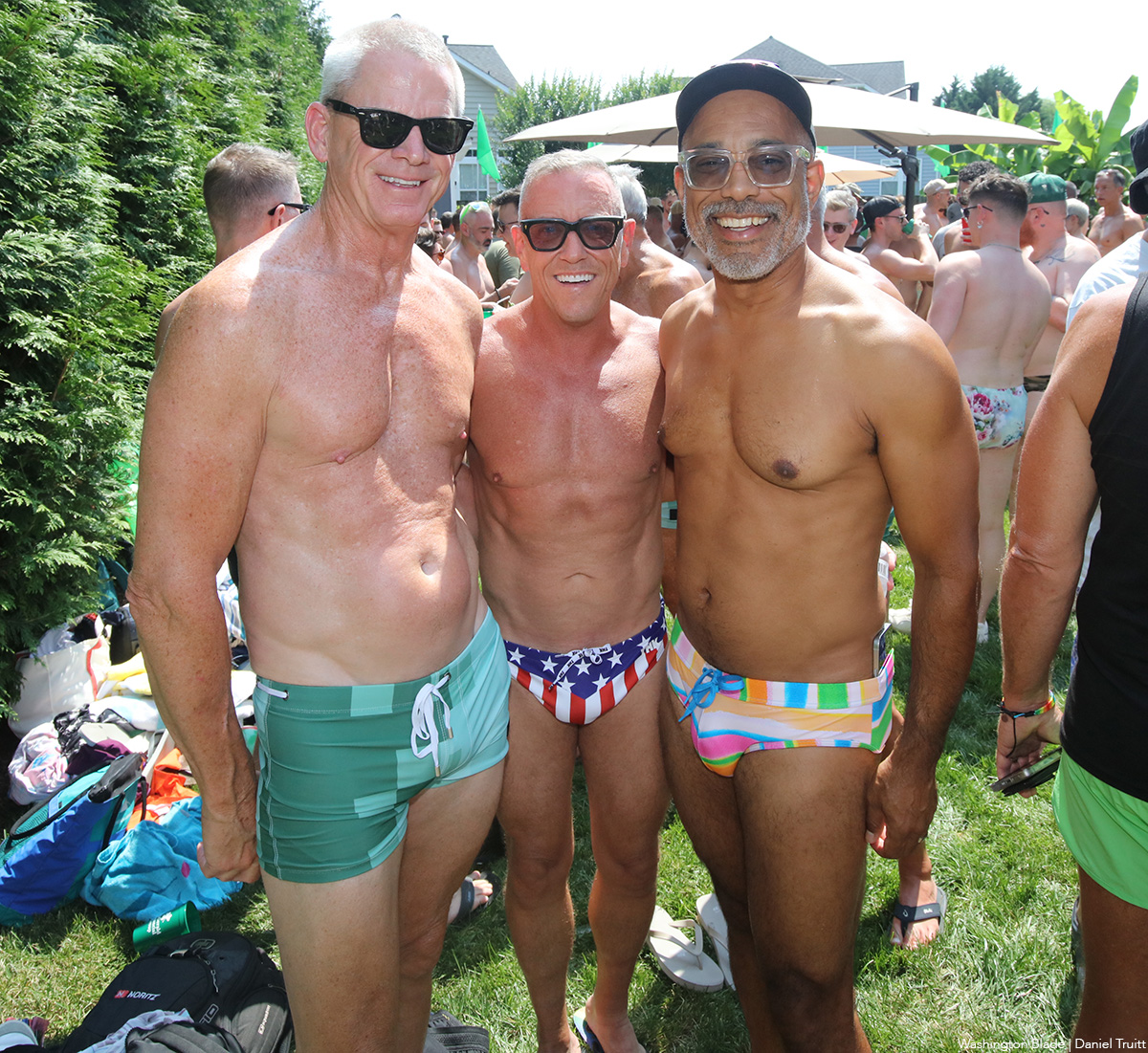
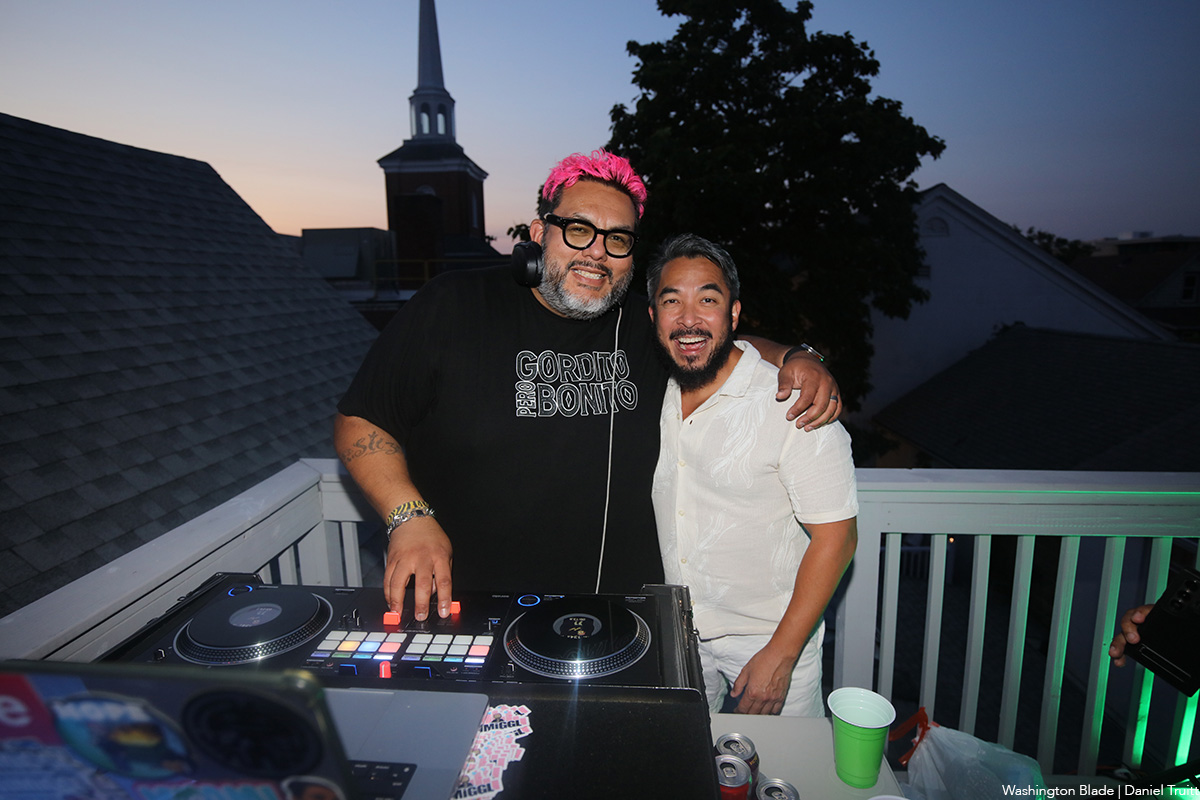

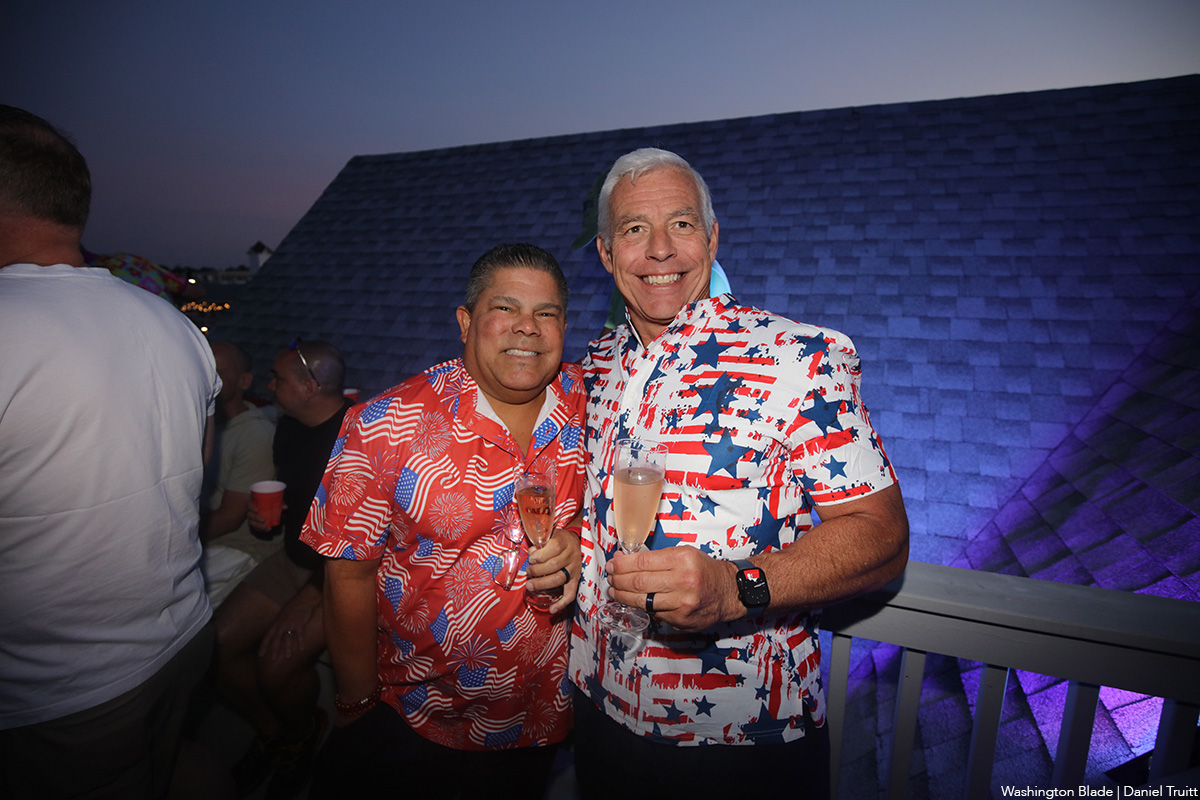
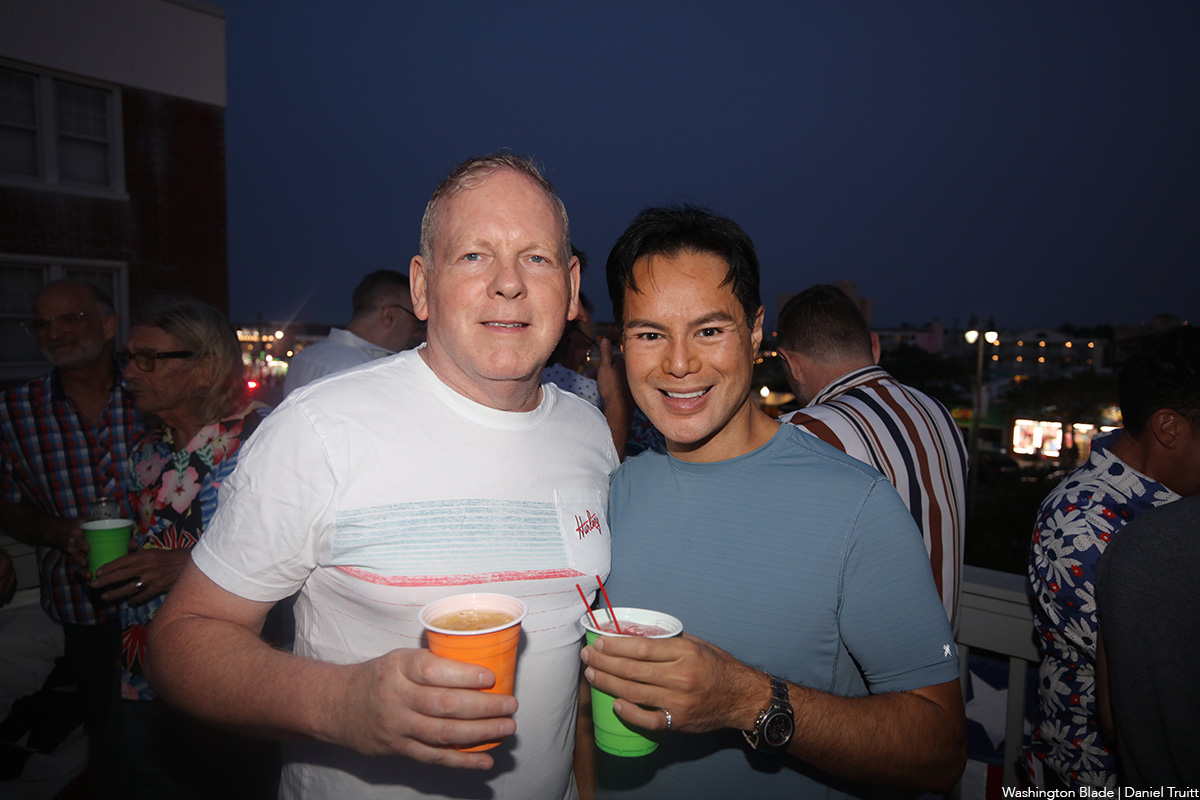
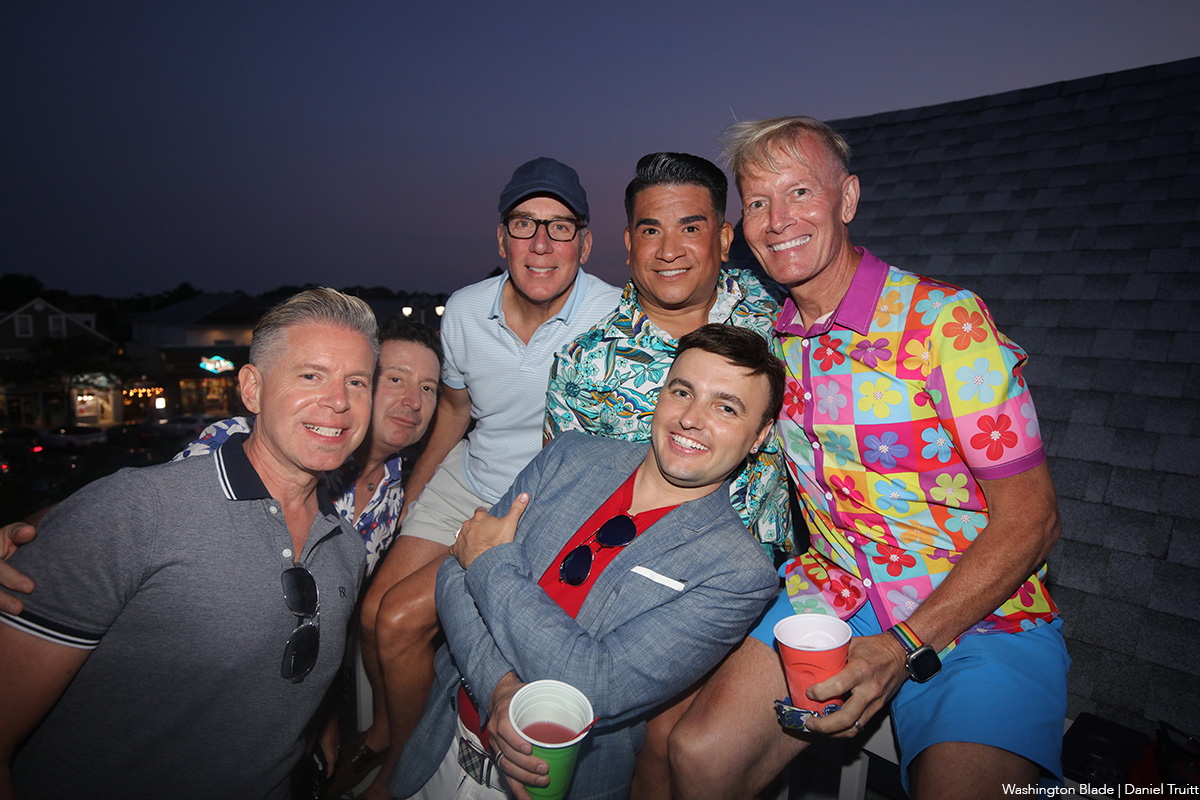
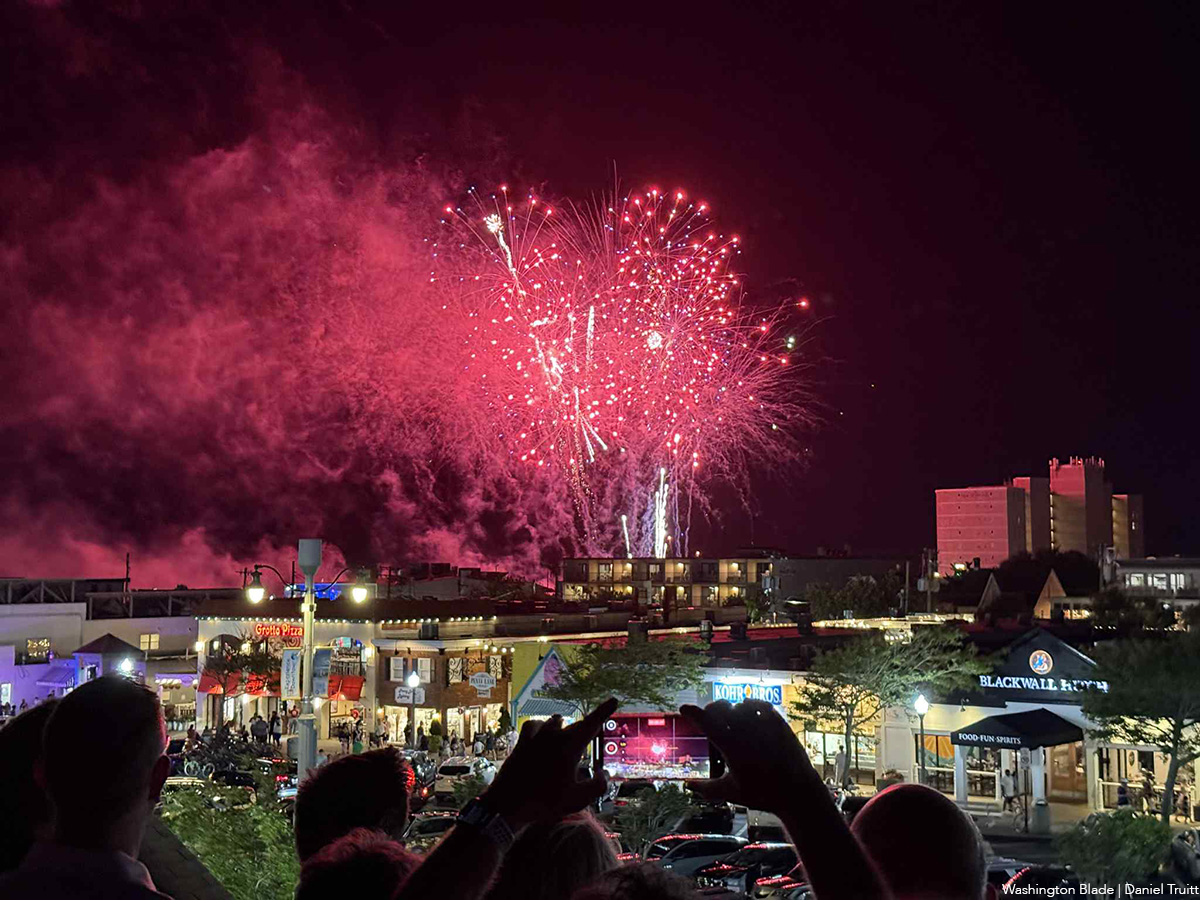
Music & Concerts
Red, White, and Beyoncé: Queen Bey takes Cowboy Carter to D.C. for the Fourth of July
The legendary music icon performed on July 4 and 7 to a nearly sold-out Northwest Stadium.
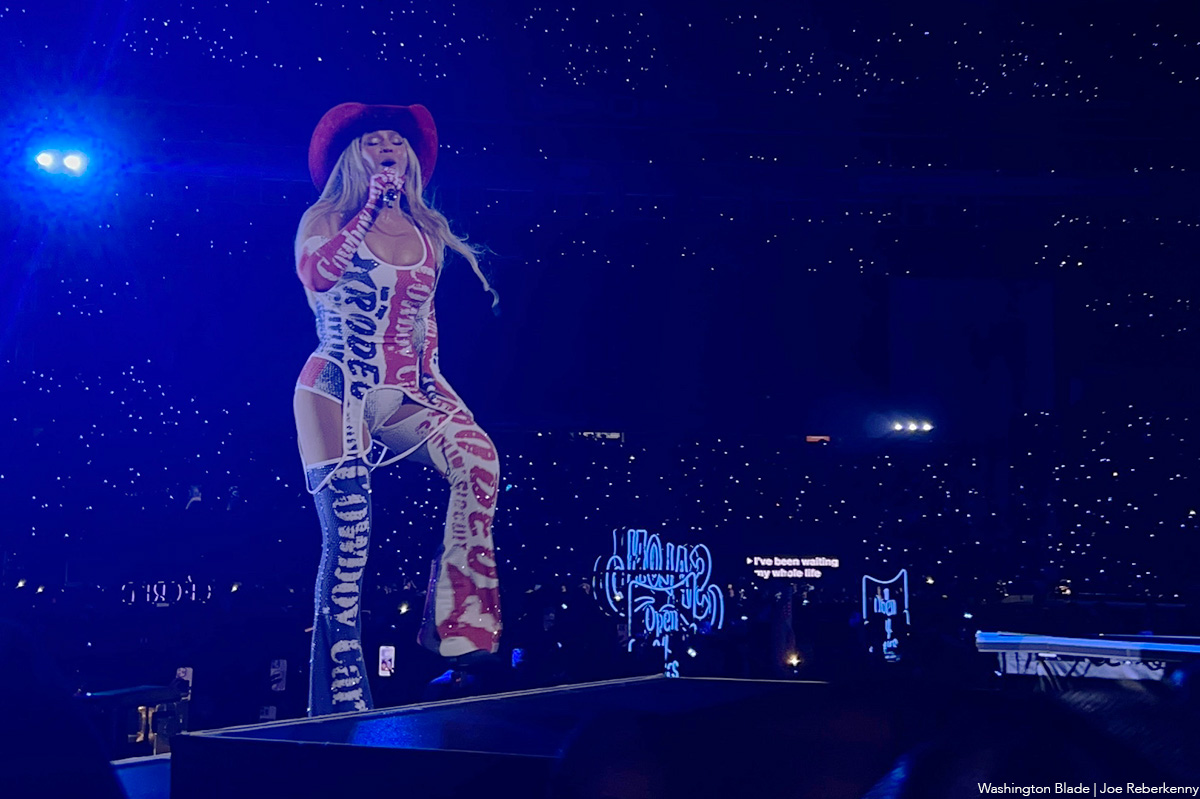
Just in time for Independence Day, Beyoncé lit up Landover’s Commanders Field (formerly FedEx Field) with fireworks and fiery patriotism, bringing her deeply moving and genre-defying “Cowboy Carter” tour to the Washington, D.C. area.
The tour, which takes the global icon across nine cities in support of her chart-topping and Grammy-winning country album “Cowboy Carter,” landed in Prince George’s County, Maryland, over the Fourth of July weekend. From the moment Beyoncé stepped on stage, it was clear this was more than just a concert — it was a reclamation.
Drawing from classic Americana, sharp political commentary, and a reimagined vision of country music, the show served as a powerful reminder of how Black Americans — especially Black women — have long been overlooked in spaces they helped create. “Cowboy Carter” released in March 2024, is the second act in Beyoncé’s genre-traversing trilogy. With it, she became the first Black woman to win a Grammy for Best Country Album and also took home the coveted Album of the Year.
The record examines the Black American experience through the lens of country music, grappling with the tension between the mythology of the American Dream and the lived realities of those historically excluded from it. That theme comes alive in the show’s opening number, “American Requiem,” where Beyoncé sings:
“Said I wouldn’t saddle up, but
If that ain’t country, tell me, what is?
Plant my bare feet on solid ground for years
They don’t, don’t know how hard I had to fight for this
When I sing my song…”
Throughout the performance, Beyoncé incorporated arresting visuals: Black cowboys on horseback, vintage American iconography, and Fox News clips criticizing her genre shift — all woven together with voiceovers from country legends like Dolly Parton and Willie Nelson. The result was a multimedia masterclass in storytelling and subversion.
The “Cowboy Carter” tour has been a social media sensation for weeks, with fans scrambling for tickets, curating elaborate “cowboy couture” outfits, and tailgating under the summer sun. At Commanders Field, thousands waited in long lines for exclusive merch and even longer ones to enter the stadium — a pilgrimage that, for many, felt more like attending church than a concert.
One group out in full force for the concert was Black queer men — some rocking “denim on denim on denim on denim,” while others opted for more polished Cowboy Couture looks. The celebration of Black identity within Americana was ever-present, making the concert feel like the world’s biggest gay country-western club.
A standout moment of the night was the appearance of Beyoncé’s 13-year-old daughter, Blue Ivy Carter. Commanding the stage with poise and power, she matched the intensity and choreography of her mother and the professional dancers — a remarkable feat for someone her age and a clear sign that the Carter legacy continues to shine.
It’s been nearly two decades since Beyoncé and Destiny’s Child parted ways, and since then, she’s more than lived up to her title as the voice of a generation. With “Cowboy Carter,” she’s not just making music — she’s rewriting history and reclaiming the space Black artists have always deserved in the country canon.
a&e features
From Prohibition to Pride: Queering the District podcast reveals local LGBTQ history
The new podcast explores the hidden history and enduring impact of queer spaces in Washington, D.C.
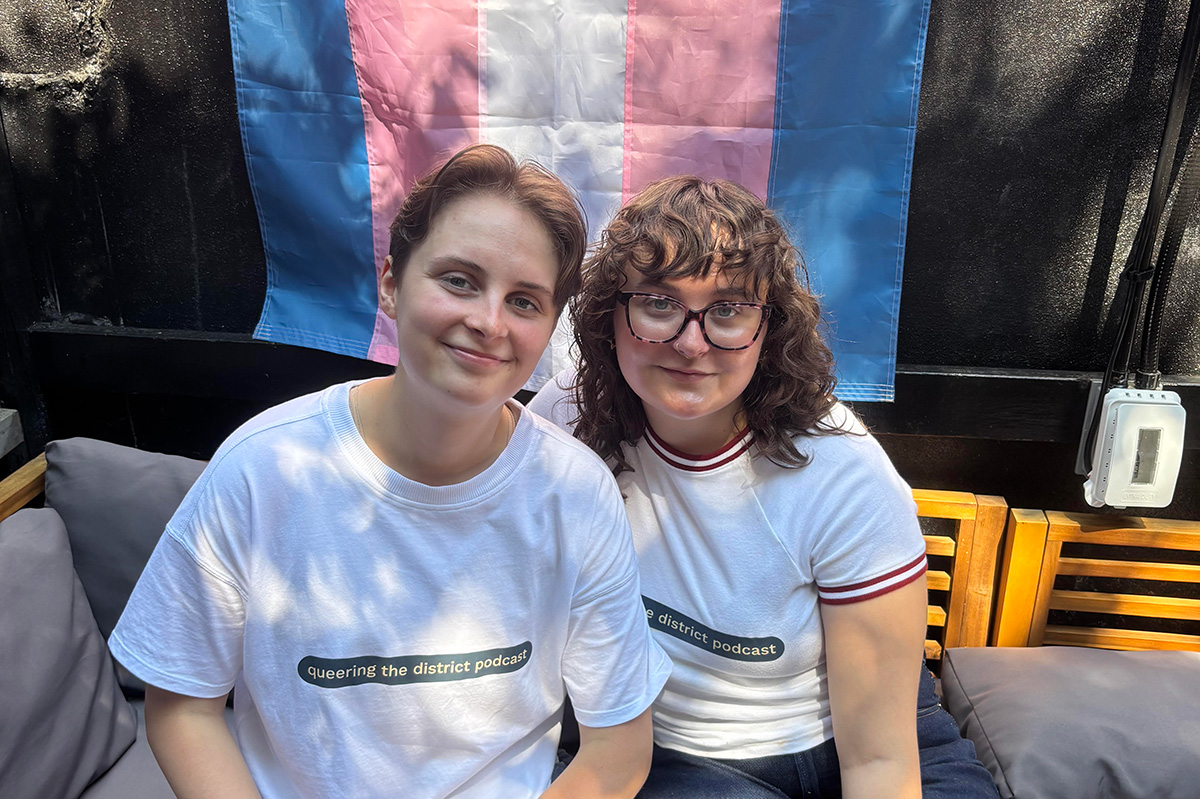
On June 25, as Pride month inched toward its end, three queer creators launched an ambitious project to honor the spaces that built D.C.’s LGBTQ community—and connect them to today’s queer life. The first episode of their podcast, Queering the District, hit streaming platforms that day, aiming to spotlight what host and co-creator Abby Stuckrath calls “third places”: bars, clubs, and gathering spots that have served as hubs for queer life across the city.
Each episode of the 10-part series delves into a different piece of D.C.’s queer past—from landmark clubs to untold personal stories—told through the voices of drag legends, activists, DJs, historians, and patrons who lived it. The show also threads together personal experiences from today’s community, bringing the listener on an auditory journey from Prohibition-era speakeasies to contemporary nights out at places like As You Are or Saints & Sinners.
Abby Stuckrath, alongside her sibling Ellie Stuckrath, and producer Mads Reagan, make up the podcast’s creative team. A recent journalism graduate of American University, Abby told the Blade that her passion for queer storytelling began during college—and that D.C. itself played a defining role in shaping her queer identity.
“I went to American University. I graduated last year and studied journalism. When I was in school, I always wanted to focus on queer stories – especially in D.C., because I’m from Denver, Colorado, I’ve never lived in a place like this before. D.C. has always just kind of been a place I call home when it comes to my queer identity.”
But breaking into the media to tell those stories wasn’t easy. Stuckrath quickly learned that editorial support—and funding—for queer-focused projects is limited. So she decided to do it her own way.
“I kind of found out that if you want to tell stories, you kind of have to do it on your own– especially when it comes to queer stories. There’s not a lot of people begging for us to talk about queer people and to pay you for it. So I was like, ‘Okay, let’s just do it on my own.’”
The idea for the podcast first took root in conversations with Ellie, Abby’s sibling and biggest supporter. Ellie had also moved to D.C. to find more space to explore and express their queer and gender identities. Together, the two began shaping a vision that would combine storytelling, sound design, and grassroots community input.
“I was like, ‘I don’t know what exactly I want to do yet, but I want it to be queer, and I want it to be about D.C., and it’s going to be called Queering the District, and we’re going to find out what that means.’ And Ellie is my biggest supporter, and my best friend. And they were like, ‘Hell yeah. Like, let’s do this.’ And so we decided to just do it together.”
The name stuck—and so did the mission. The team began researching queer D.C. history and found a city overflowing with stories that had rarely been documented, especially in mainstream archives.
“We started looking up the history of queer culture in D.C., and it kind of just clicked from there,” Stuckrath said. “I did not know anything about how rich our history is in the city until one Google search, and then I just kept learning more and more. I was kind of pissed because I studied gender studies in school in D.C. and didn’t learn shit about this.”
Season one focuses on the role of third places—non-work, non-home spaces where queer people could gather, exist fully, and build community.
“Third places have always been the epicenter of queer life… places outside of just your own personal home, because sometimes that isn’t a safe place. And of course, the work most commonly in the past and still today, isn’t a safe place for queer people to be full of themselves. So like, bars were the first place for queer people to really thrive and meet each other.”
To make the show participatory, Queering the District includes a twist: a voicemail line where anyone can call in and share a memory or question. The team calls the phone “Fifi”—a nod to the kind of retro guestbooks often used at weddings, but reimagined for queer nightlife and history.
“We wanted to find a way for people to share their stories with us anonymously… so even though we start in Prohibition, we wanted to connect it to now—like, those people who were singing jazz to each other in a white queer bar are connected to you singing karaoke on a Sunday night at your favorite gay bar. We’re all interconnected by this third place of queer bars in D.C.”
Those connections are emotional as well as historical. While building the series, one realization hit Stuckrath particularly hard: the immense loss of queer spaces in D.C., especially in neighborhoods that have since been heavily redeveloped.
“Every time I go to a Nats game, I think about, well, this just replaced five gay bars that used to be here. It used to be the home of Ziegfeld’s… Tracks, which was almost 2,000 square feet, with a volleyball court in the back, a fire pit, and iconic light show. I just didn’t know that we had that, and it made me sad for the queer elders that are in our city now who walk the streets and don’t see all those places they used to call home.”
That sense of loss—alongside the joy and resilience of queer community—is what the show aims to capture. As the podcast continues, Abby hopes it serves as both a celebration and an educational tool, especially for young LGBTQ people arriving in D.C. without realizing the queer foundations they’re walking on.
“D.C. is a unique city, and specifically young queer people who are hoping to move to the city—to know that you’ve got to know your history to be here. I hope this serves as an easier way for you to consume and learn about queer history, because queer history defines how we move in life.”
And for all the voices still left out, Abby is clear: this podcast is an open door, not a final word.
“This is a perfectly imperfect podcast. We should just be a starting point. We shouldn’t be the ending point.”
New episodes of Queering the District drop every Wednesday on all major platforms.
-
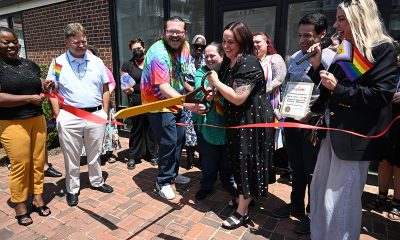
 Virginia1 day ago
Virginia1 day agoDefying trends, new LGBTQ center opens in rural Winchester, Va.
-
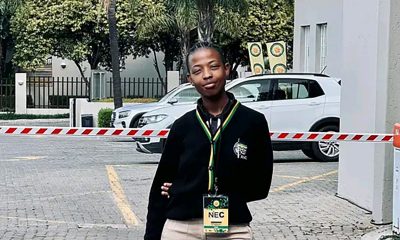
 South Africa4 days ago
South Africa4 days agoLesbian feminist becomes South African MP
-
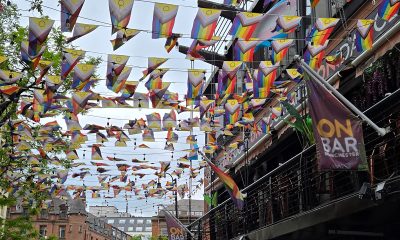
 Travel3 days ago
Travel3 days agoManchester is vibrant tapestry of culture, history, and Pride
-
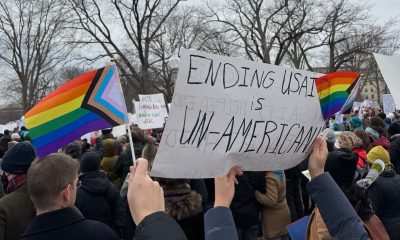
 Opinions2 days ago
Opinions2 days agoUSAID’s demise: America’s global betrayal of trust with LGBTQ people

